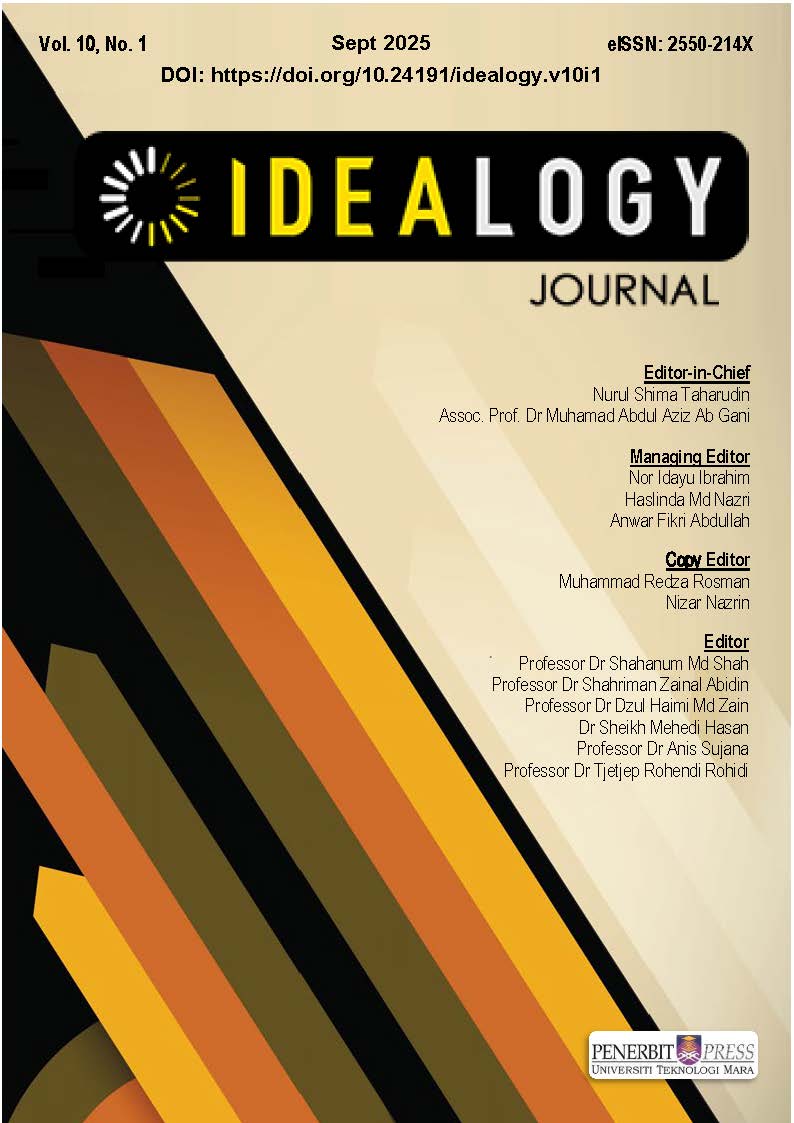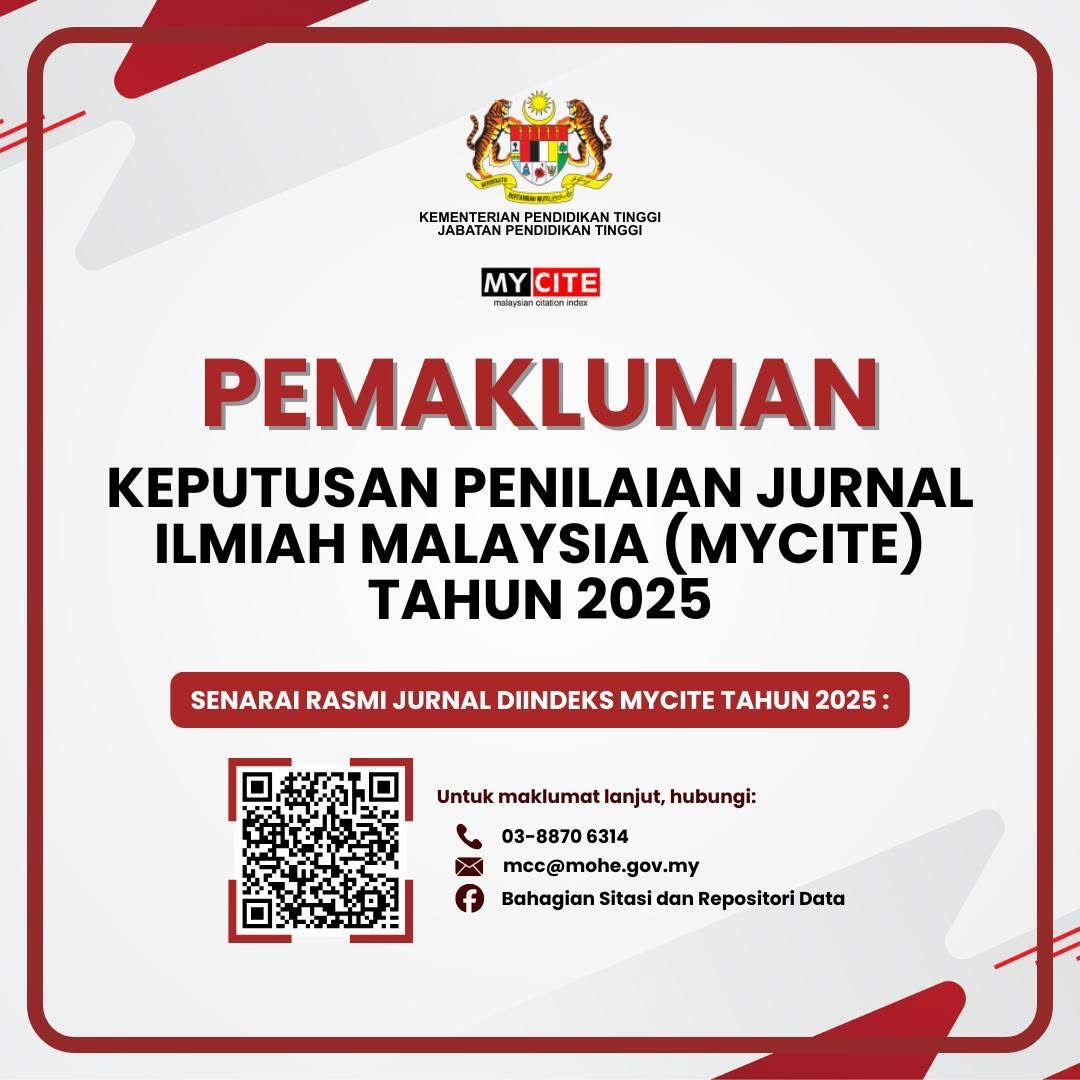Current Status and Improvement strategies of Chinese Contemporary Design:A Visualization Research Based on CiteSpace
DOI:
https://doi.org/10.24191/idealogy.v10i1.698Keywords:
Chinese contemporary design; Improvement strategies; CiteSpace; Visualization researchAbstract
The development of design relates to many areas of the country's economy and people's lives. To understand the current research of modern design in China and analyze future development trends, the published paper about China modern design in Web of Science Core Collection (WOSCC) database and China National Knowledge Infrastructure (CNKI) were investigate by visualized analysis use CiteSpace software. The following aspects between international work and Chinese work are compared in the present study, including publication quantity, national collaboration network, disciplinary type network, author analysis, and evolution of hotspots. The results show that the number of international literatures on Chinese modern design exceeds that of in China and with an increasing trend both them. Although the nations collaborations in CNKI is inferior than that of in WOSCC, China is the most influential compared with other countries, which indict a large number of studies are published in non-Chinese journals, result a truth that it is not conducive to the dissemination of design research between scholars and Chinese designers. For disciplinary distribution and core author, the international research teams are more diverse and widespread, while domestic networks are relatively concentrated with significant differences in research focuses. Chinese design researcher needs to strengthen communication and cooperation between different disciplines either domestic and international, which is an effective means for the advancement of design in international researchers. As for research hotspots and trends, international researchers focus on the development directions of design with digitalization, intelligence, and virtualization, while domestic researchers continue to research the historical roots of traditional Chinese culture and reflect on the integration relationship between traditional culture and design. Based on the analyses above mentioned, some suggestions are present for improve the design philosophy and methodology, and ultimate enhance the competitiveness of Chinese design.
Keywords:Chinese contemporary design; Improvement strategies; CiteSpace; Visualization research
References
M. Makeham, Role of digital technology in delivering 'healthy futures' and 'healthy cities', Intern. Med. J. 50(11) (2020) 1408-1409.
Tom Buckland, (June 5, 2019), The best ecommerce sites for inspiration &what to learn from them. https://amazonseoconsultant.com/best-ecommerce-site-examples/,Retrieved April 23,2024,
A. Ganguly, J. Euchner, Conducting Business Experiments Validating New Business Models Well-designed business experiments can help validate assumptions and reduce risk associated with new business models, Res.-Technol. Manage. 61(2) (2018) 27-35.
R. Wang, Y. Wang, Study on Transformation and Upgrade of China's Equipment Manufacturing Industry from the Perspective of GVC, Agro Food Industry Hi-Tech 28(1) (2017) 129-132.
D.H. Kim, L. Jin-Hwa, A Case Study on Metaverse Fashion Marketing of Global Fashion Luxury Brand, Journal of Art & Design Research 25(1) (2022) 11-24.
H.N. Pei, S.H. Yu, B.Z. Tian, Analysis of Apple's Design Management Policy, 4th International Conference on Frontiers of Manufacturing and Design Science (ICFMD 2013), Trans Tech Publications Ltd, Hong Kong, PEOPLES R CHINA, 2013, pp. 2626-2629.
A. Cravino, La Bauhaus: Hacia la consolidación de un empirismo lógico, Cuadernos del Centro de Estudios en Diseño y Comunicación. Ensayos (113) (2022) 16-43.
J. Qin, K.H. Zhao, H.Y. Yu, Art Design Education in the New Era Featured with the Integration of Arts and Motion Sensing Technology, Eurasia J. Math. Sci. Technol. Educ. 13(8) (2017) 5883-5891.
Y. Cui, J. Mou, Y.P. Liu, Knowledge mapping of social commerce research: a visual analysis using CiteSpace, Electron. Commer. Res. 18(4) (2018) 837-868.
Y.L. Wang, H.Q. Liu, Y.J. Li, H. Jing, F. Zhang, L. Ji, Visualization analysis of relevant literature on occupational health risk assessment from 2010 to 2019, Zhonghua lao dong wei sheng zhi ye bing za zhi = Zhonghua laodong weisheng zhiyebing zazhi = Chinese journal of industrial hygiene and occupational diseases 39(5) (2021) 346-350.
W. Yao, J. Lee, Aesthetics research of Chinese traditional lamps and lanterns using product semantics, Archives of Design Research 24(4) (2011) 437-452.
S. Wu, W.M. Liu, Iop, Discussion on the Aesthetic Concept of Chinese Traditional Culture in Modern Furniture Design, 7th International Forum on Industrial Design, Iop Publishing Ltd, Luoyang Govt, Luoyang, PEOPLES R CHINA, 2019.
G.L. Jia, R.G. Ma, Z.H. Hu, Review of Urban Transportation Network Design Problems Based on CiteSpace, Math. Probl. Eng. 2019 (2019) 22.
.O. Lee, The Design of China and History -Three Periods of Architectural Design in Modern China, A Treatise on The Plastic Media 24(4) (2021) 231-239.
I. Gaziulusoy, E.E. Öztekin, Design for Sustainability Transitions: Origins, Attitudes and Future Directions, Sustainability 11(13) (2019) 16.
T. Kilger, H. Theuss, S. Paulus, J. Dangelmaier, M. Dittes, K. Pressel, Environmentally friendly semiconductor packages: The design of an innovative leadless package concept, International Congress and Exhibition on Electronics Goes Green 2004+, Fraunhofer Irb Verlag, Berlin, GERMANY, 2004, pp. 901-906.
J. Fawcett, Thoughts About Multidisciplinary, Interdisciplinary, and Transdisciplinary Research, Nurs. Sci. Q. 26(4) (2013) 376-379.
R.A. Bordini, C.A.B. Santos, Acm, Art Access in Pandemic Times: 3D Digitization Process of an Art Gallery, 10th International Conference on Digital and Interactive Arts (ARTECH), Assoc Computing Machinery, UNIVERSIDADE DE AVEIRO, Aveiro, PORTUGAL, 2021.
C.F. He, Y.H.D. Wei, X.Z. Xie, Globalization, institutional change, and industrial location: Economic transition and industrial concentration in China, Regional Studies 42(7) (2008) 923-945.
A. Buhl, M. Schmidt-Keilich, V. Muster, S. Blazejewski, U. Schrader, C. Harrach, M. Schäfer, E. Süssbauer, Design thinking for sustainability: Why and how design thinking can foster sustainability-oriented innovation development, J. Clean Prod. 231 (2019) 1248-1257.
C.H. Chen, Construction of Industrial Design Education System with Consideration of Chinese and Western Cultural Integration and Counter-Measure Analysis, Educ. Sci.-Theory Pract. 18(5) (2018) 1968-1975.
Z.Q. Zhang, Y.X. Zhao, Q.F. Zhao, Discussion on the necessity of absorbing Chinese culture into Chinese design, 7th International Conference on Computer-Aided Industrial Design and Conceptual Design (CAID&CD), Ieee, Hangzhou, PEOPLES R CHINA, 2006, pp. 501-+.
Q. Liu, L.X. Diao, G.C. Tu, L.L. Lu, The Application of Digital Media Technology in Art Design, International Conference on Multimedia, Software Engineering and Computing, Springer-Verlag Berlin, Wuhan, PEOPLES R CHINA, 2011, pp. 453-+.
L. Corsini, J. Moultrie, Design for Social Sustainability: Using Digital Fabrication in the Humanitarian and Development Sector, Sustainability 11(13) (2019) 20.
Downloads
Published
Issue
Section
License
Copyright (c) 2025 Idealogy Journal

This work is licensed under a Creative Commons Attribution-NonCommercial-NoDerivatives 4.0 International License.
UiTM Press (the Publisher) has agreed to publish the undersigned author’s paper in Idealogy Journal. The agreement is contingent upon the fulfilment of a number of requirements listed below.
1. The undersigned author warrants that the paper entitled below is original, that it is not in any way libellous or unlawful in Malaysia, that it does not infringe any copyright or other proprietary right. The undersigned hereby represents and warrants that he/she is the author of the paper, except for material that is clearly identified as to its original source, with permission notices from the copyright owners where required. The undersigned represents that he/she has the power and authority to sign and execute this agreement.
2. The undersigned author warrants that the paper entitled below has not been published elsewhere, and also it will not be submitted anywhere else for publication prior to acceptance/rejection by this Journal.
3. By submitting the paper entitled below, the undersigned author agrees to transfer the rights to publish and distribute the paper in an international e-journal (entitled above) to Publisher.
4. The undersigned author agrees to make a reasonable effort to conform to Publisher's submission guidelines and to liaise with the editor to ensure that the requirements of these guidelines are met to a reasonable degree.
5. The corresponding author signs for and accepts responsibility for releasing this material on behalf of any and all coauthors. This agreement is to be signed by at least one of the authors who has obtained the assent of the co-author(s) where applicable. After submission of this agreement signed by the corresponding author, changes of authorship or in the order of the authors listed will not be accepted.



